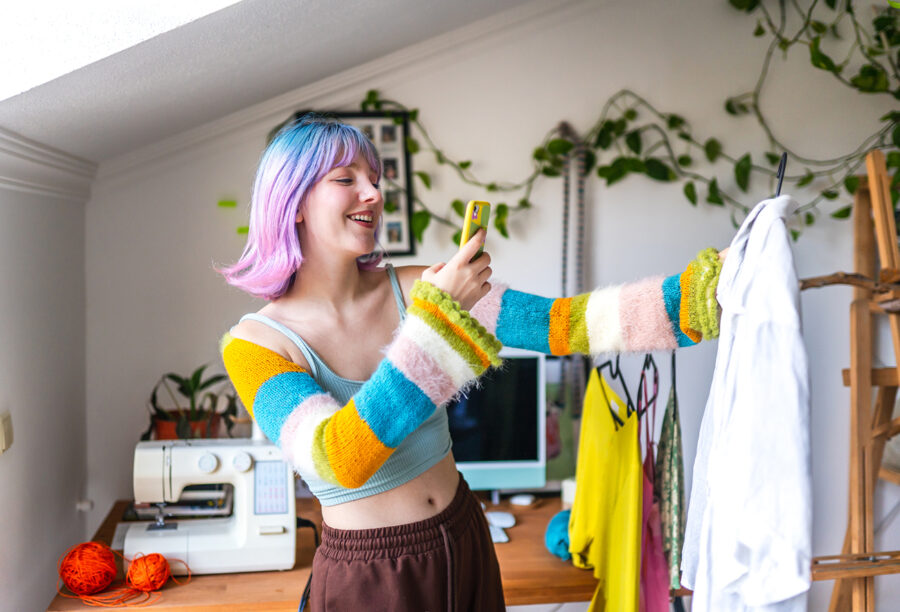Whether it’s a used luxury handbag, vintage sneakers, a cellphone, or a low-tech treadmill, nearly everything old is finding new life through reselling items, both online and in stores. It’s a trend that has turned into a multibillion-dollar market. The global secondhand market for apparel alone is expected to double in size to $351 billion by 2027, according to Statista.
Wharton marketing professor Thomas S. Robertson studies the runaway growth of resale and has an urgent message for companies reluctant to get on the bandwagon: If they don’t sell their own used products, somebody else will.
“This is a large market, and it is evolving fast,” he said. “There will be more profits to be made in this market, and there certainly are sustainability credentials to be gained in this market.”
Robertson wrote about the “resale revolution” in an article published by Harvard Business Review late last year. He recently spoke to Knowledge at Wharton about why consumers are gravitating toward secondhand items and how retailers can carve their own niche in the resale space, which is getting crowded. Retail giants Amazon and Walmart are already selling used products, along with Apple, Lululemon, Dick’s Sporting Goods, and many others. “Gently pre-loved” sections are turning up in department stores such as Dillard’s. And Neiman Marcus has partnered with luxury reseller Fashionphile, letting customers drop off pre-owned luxury handbags and accessories in select stores.
“I don’t know what the future holds, but there are going to be new, omnichannel business models around resale,” said Robertson, who is also director of the Baker Retailing Center. “We’re already seeing an integration of new and used on sites like Amazon, and you see it more and more in fashion.”
“This is reverse conspicuous consumption, in a sense. It’s another form.”— Thomas S. Robertson
Gen Z and Sustainability
Robertson said the resale revolution is being driven by younger consumers, like the sophomores and juniors in his classes who tell him that sustainability is an important core value for them. The crises of climate change, plastic pollution, energy transition, and food insecurity have heightened their commitment to living sustainably and wasting less.
There’s also no longer a stigma associated with used goods. On the contrary, Gen Z consumers use sustainability as a virtue signal to others that they are thrifty, conscientious, and care about the environment. Robertson said his undergraduate research assistant Anoushka Ambavanekar, who helped with the HBR article, is also a strong advocate for sustainability.
“This is reverse conspicuous consumption, in a sense. It’s another form,” Robertson said. “Social media channels have a lot to do with this. Young consumers may go thrifting and then display their finds to friends on Instagram and TikTok and YouTube.”
Older consumers still matter, but younger ones wield “disproportionate influence” in retail, the professor said. They are spreading the sustainability ethos to others, making it “move up the ranks” in the factors people consider when purchasing.
For companies, reselling items helps them build a solid sustainability reputation, especially in high-waste industries such as fashion. Some fashion brands have suffered from negative publicity over wasteful practices, and resale can help them prove to fickle customers that they are committed to change.
“They do it for the long-run sales and profits, but in the short run they may not make money. So, many of them are doing it to establish their sustainability credentials,” he said.
The professor said companies needn’t be so concerned that resale encourages consumers to “trade down,” which means buying lower-priced used items instead of new, full-priced versions. He said resale can expand the customer base by giving shoppers a first rung to step onto the brand ladder.
“If you can get them on that ladder through resale, you hope to make them long-term customers who aspire to buy original merchandise,” he said. “Some of them will and some of them won’t, but the real result is that you are bringing in new customers by introducing them to products they may not have been able to buy before.”
“I don’t know what the future holds, but there are going to be new, omnichannel business models around resale.”— Thomas S. Robertson
Guidelines for Success in Reselling Items
Robertson offered some guiding principles for reselling items that he’s learned from years of research and in-depth conversations with numerous retail executives. They are:
Make the process frictionless for customers.
Retailers can do this in a number of ways, such as certifying pre-owned products for authenticity or offering store credit for trade-ins.
Work with a third party.
While it’s often better for brands to exercise total control over their resale, not every retailer has the bandwidth to create the best strategy. Enlist the help of a vendor that can manage the inventory, create a website, and integrate resale into the business model.
Appeal to the Gen Z consumer.
Young shoppers are smart, so brands need to give them more than just resale opportunities. Brands need to prove that their values are aligned with their Gen Z customer.
Build an integrated portfolio.
The line between new and used may blur over time, so consider incorporating returns into resale. A vast majority of returned items are sold to discount outlets, discarded, or sent abroad. Recapture some of that lost revenue by selling returned items in house.
Start brand loyalty initiatives.
Examples include credit for trade-ins or rewards programs. This practice creates lifetime customer value by keeping them with the brand.



